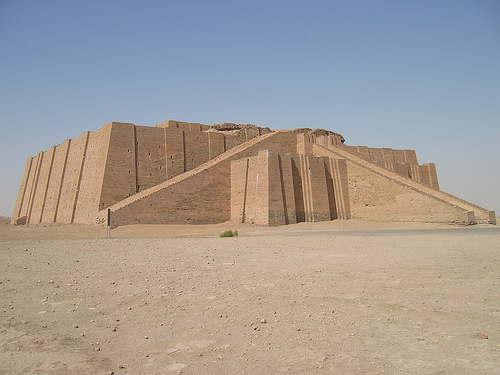

Explanation: One of the most common functions of religion is to offer some explanation for things beyond human understanding through references to divine or supernatural forces. This function certainly included explanations for various natural phenomena or disasters that were poorly understood before the advent of modern science, but also encompassed such ultimate questions as the origin of the world or the purpose human life which often continue to be answered in religious terms even today.
Influence: The purpose of religious rituals frequently went beyond providing explanations and into the realm of attempting to influence divine forces. Such rituals could take the form of everything from prayers to propitiatory sacrifices of useful items, animals, or in some cases, even human beings.
Social Organization: Religion also generally functioned as a way to give structure to human societies and to explain how human beings ought to behave and relate to one another. This aspect of religion could take the form of moral codes attributed to divine forces, and not infrequently served to reinforce existing political and social hierarchies. Indeed, it is no accident that some of the earliest Mesopotamian religious texts describe the creation of the world as the triumph of the gods over the forces of chaos, mirroring the establishment of political authority and social order by the early governments of the region.
Destiny: Some religions also attempted to provide some description of the ultimate destiny of human beings. Such descriptions might include beliefs in some sort of afterlife involving a system of judgment and punishment or reward by divine forces. Religions did not universally include such beliefs, as the Hindu doctrine of reincarnation or ancient Roman religion’s lack of a sense of life after death illustrate.
Bronze Age Paganism
The earliest religions we have written evidence for date from the Bronze Age, and might be described as Paganism (This was a term initially coined as a pejorative by early Christians but can here is merely intended to describe a variety of early polytheistic or pantheistic religions which share certain common traits.) The nature of divinity in pagan beliefs could vary quite widely from people to people. Most of the religions of the western world and the Indian subcontinent during the Bronze Age were polytheistic, acknowledging the existence of a variety of distinct gods with individual personalities. Such gods were generally portrayed in anthropomorphic terms, with a host of features and traits which were recognizably similar to those of human beings, even if the gods themselves were still seen as being above humans in power and wisdom. In other Bronze Age societies, such as those in east Asia, Africa, and the Americas, such religion could focus on the worship of nature as an impersonal yet divine force which might be influenced by religious ritual. The worship or veneration of dead ancestors also could be a quality of pagan religion as well. Bronze age paganism also tended to be quite local, as certain deities were associated with specific regions, cities, or peoples as patron gods.
Monolatry
As ancient paganism developed, it also changed to accommodate new circumstances on the ground. Starting in the late third millennium BCE, paganism in the Near East gradually became less local, as rulers such as Sargon of Akkad and Hammurabi of Babylon crafted successive large empires in Mesopotamia, replacing the earlier system of independent city states. As a reflection of this new political situation, the worship of the gods was consolidated into a more hierarchical form, with certain deities gaining status as preeminent or as "kings" of divine pantheons. In some cases, certain gods even "absorbed" the gods of other regions, which were regarded as mere aspects of the supreme deities. After many centuries of such development, the region witnessed the emergence of what some scholars have termed "monolatry," a religious style which firmly asserted the supremacy of one particular god, even while acknowledging the existence of other gods. The cults of the Babylonian god Marduk, the Assyrian deity Assur, and probably the early worship of Yahweh, the god of the ancient Israelites, represent the best historical examples of monolatry.